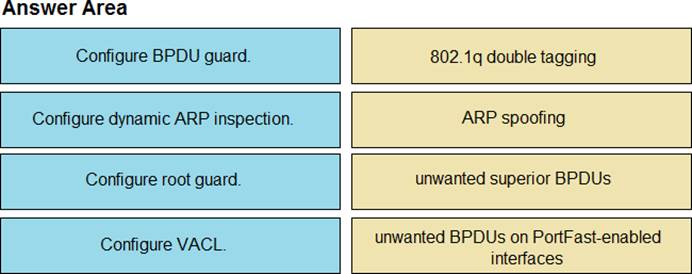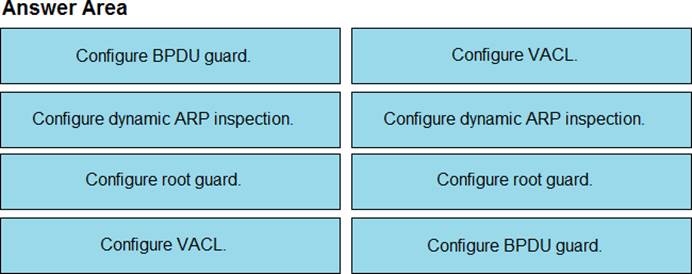Drag and drop the threat-mitigation techniques from the left onto the types of threat or attack they mitigate on the right.

Answer: 
Explanation:
Double-Tagging attack:

In this attack, the attacking computer generates frames with two 802.1Q tags. The first tag matches the native VLAN of the trunk port (VLAN 10 in this case), and the second matches the VLAN of a host it wants to attack (VLAN 20).
When the packet from the attacker reaches Switch A, Switch A only sees the first VLAN 10 and it matches with its native VLAN 10 so this VLAN tag is removed. Switch A forwards the frame out all links with the same native VLAN 10. Switch B receives the frame with an tag of VLAN 20 so it removes this tag and forwards out to the Victim computer.
Note: This attack only works if the trunk (between two switches) has the same native VLAN as the attacker. To mitigate this type of attack, you can use VLAN access control lists (VACLs, which applies to all traffic within a VLAN. We can use VACL to drop attacker traffic to specific victims/servers) or implement Private VLANs.
ARP attack (like ARP poisoning/spoofing) is a type of attack in which a malicious actor sends falsified ARP messages over a local area network as ARP allows a gratuitous reply from a host even if an ARP request was not received. This results in the linking of an attacker’s MAC address with the IP address of a legitimate computer or server on the network. This is an attack based on ARP which is at Layer 2.
Dynamic ARP inspection (DAI) is a security feature that validates ARP packets in a network which can be used to mitigate this type of attack.

